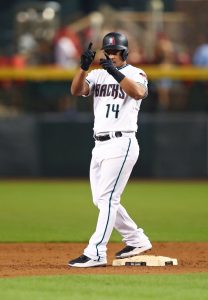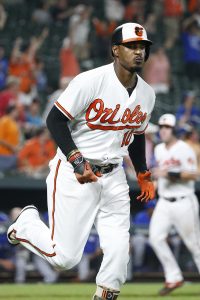The Diamondbacks announced Tuesday that right fielder Steven Souza Jr. will undergo major surgery to repair his his left knee. The operation will address not only a torn ACL but also a torn LCL, a partially torn PCL and a posterolateral capsule tear. Souza suffered the injury while crossing home plate in last night’s Cactus League game. He was helped off the field after crumpling to the ground and underwent an MRI to evaluate the damage this morning.
The gruesome injury will bring about a second frustrating year for Souza, whom the D-backs had hoped could give them a controllable power bat in right field at the time of his acquisition from the Rays. A series of pectoral strains limited Souza to just 72 games in 2018, though, and he now won’t suit up until 2020 at the earliest. A specific timetable on injury of this magnitude won’t be known until surgeons have repaired the extensive damage.
Souza, 29, looked to be healthy after last seasons injury troubles this spring as he turned in a 10-for-47 effort with a pair of homers, a double and seven walks. He’d been lined up to serve as Arizona’s everyday right fielder but will now cede those duties to some combination of Adam Jones and Jarrod Dyson. Jones, who signed a one-year deal worth $3MM with the Diamondbacks earlier this month, had been set to play all three outfield positions but may now slot in as the primary right fielder with Dyson backing up Ketel Marte. The loss of Souza significantly increases the odds that utilityman Ildemaro Vargas will break camp with the Diamondbacks.
Arizona and Souza agreed to a $4.125MM salary to avoid arbitration earlier this offseason, and he’ll remain under team control through the end of the 2020 season. It’s fairly common for players who miss the entire season due to injury to receive the same salary in arbitration rather than any kind of raise, so if the team is confident in Souza’s ability to return to health in 2020, he could be in line for a similar (if not slightly reduced) rate of pay.
The loss of Souza is compounded by the fact that Arizona had placed fellow outfielder Socrates Brito on waivers prior to last night’s game, meaning one of the team’s primary depth pieces to replace him could now be lost to another organization. If Brito ultimately clears waivers, the Diamondbacks could immediately select him back to the 40-man roster, as placing Souza on the 60-day injured list would open a spot on the 40-man roster. If Brito is claimed by another club, it wouldn’t be a surprise to see the Diamondbacks look into outfield alternatives. The team does have some non-roster options to which it could turn in the form of Yasmany Tomas, Abraham Almonte and Matt Szczur, but none of that trio was able to secure a roster spot in Spring Training.


